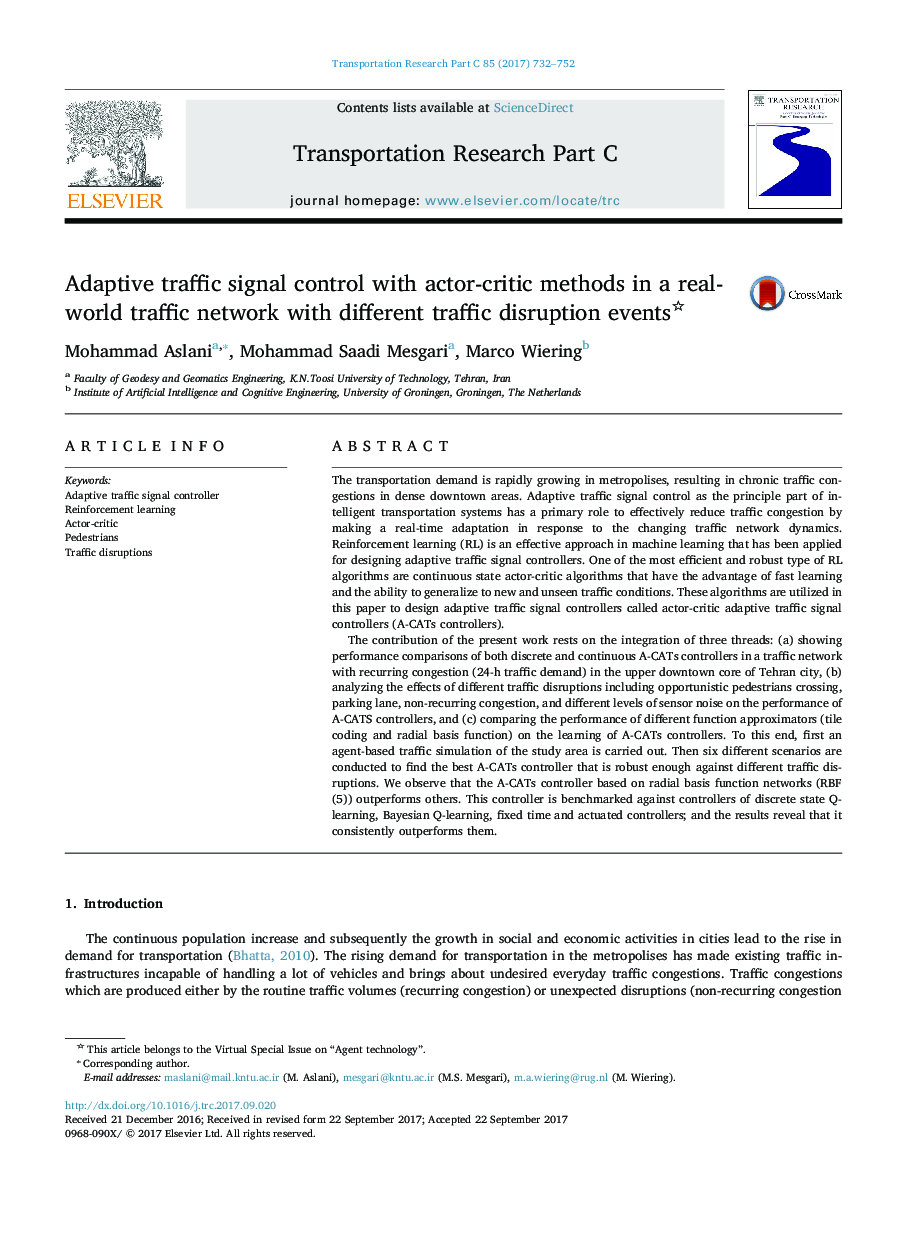| Article ID | Journal | Published Year | Pages | File Type |
|---|---|---|---|---|
| 6936321 | Transportation Research Part C: Emerging Technologies | 2017 | 21 Pages |
Abstract
The contribution of the present work rests on the integration of three threads: (a) showing performance comparisons of both discrete and continuous A-CATs controllers in a traffic network with recurring congestion (24-h traffic demand) in the upper downtown core of Tehran city, (b) analyzing the effects of different traffic disruptions including opportunistic pedestrians crossing, parking lane, non-recurring congestion, and different levels of sensor noise on the performance of A-CATS controllers, and (c) comparing the performance of different function approximators (tile coding and radial basis function) on the learning of A-CATs controllers. To this end, first an agent-based traffic simulation of the study area is carried out. Then six different scenarios are conducted to find the best A-CATs controller that is robust enough against different traffic disruptions. We observe that the A-CATs controller based on radial basis function networks (RBF (5)) outperforms others. This controller is benchmarked against controllers of discrete state Q-learning, Bayesian Q-learning, fixed time and actuated controllers; and the results reveal that it consistently outperforms them.
Related Topics
Physical Sciences and Engineering
Computer Science
Computer Science Applications
Authors
Mohammad Aslani, Mohammad Saadi Mesgari, Marco Wiering,
